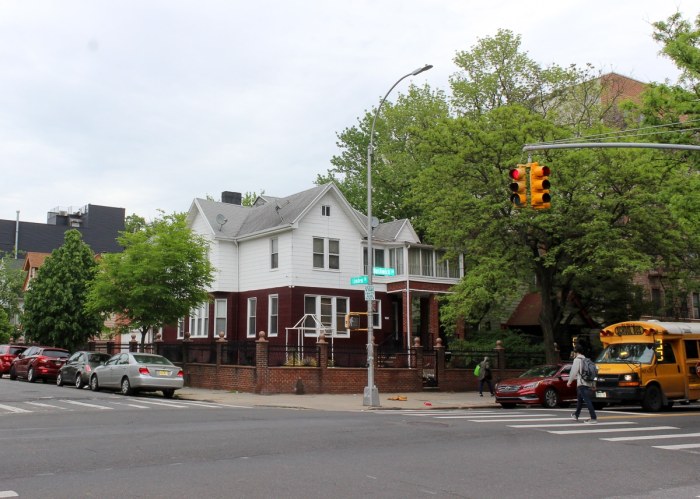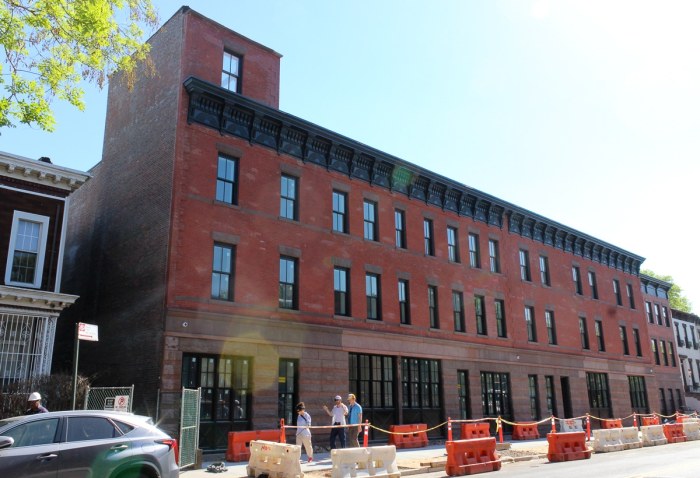The Bloomberg administration illegally diverted more than $22 million
in city funds, using the money as a slush fund to further the agenda of
Mayor Michael Bloomberg, city Comptroller William Thompson charged this
week.
This was possible because of the lack of accountability in a financing
scheme known as PILOTs — payments in lieu of taxes — meant to
assist so-called economic development projects.
Two big Brooklyn developments — Atlantic Yards and Brooklyn Bridge
Park — are each largely dependent on PILOTs like the one that Thompson’s
audit says are roiled with a lack of accountability.
Thompson said that $22.1 million in payments made between 2002 and 2004
went straight to the city Economic Development Corporation. He said the
EDC illegally distributed the money to causes driven by the mayor’s
agenda, including $8.4 million for a new headquarters for the New York
Stock Exchange (which fell through), $7 million for cancer research, $700,000
for the city’s police museum, and than half a million dollars paid
to consultants on the failed effort to build a new football stadium for
the Jets on Manhattan’s West Side.
In addition, Thompson found $59.4 million that was held past the 30-day
retention deadline by the city’s Office of Management and Budget,
which is chartered to deposit PILOT payments into the city treasury, and
a total of $2.1 million was lost to the city from payments not collected
by the Finance Department.
“We were surprised to find that this amount of money had been diverted
without any oversight,” said Thompson.
The PILOT program, which allows project developers to offer payments in
lieu of taxes for the publicly owned property on which their development
is built is susceptible to costly flaws and misuse, the audit charges.
A bill passed by the state Legislature in June allows the redirection
of taxes collected from property owners within Brooklyn Bridge Park’s
development to a PILOT program whose proceeds would go to pay the project’s
operating expenses.
So far, this would only benefit the developer of a former Watchtower Bible
& Tract Society book and video distribution plant at 360 Furman St.,
but critics say the bill expedites the process for the creation of other
housing by private developers in the park, which is mandated to pay its
own maintenance.
In meetings this year, the park planners have said that revenue from 360
Furman St. could cover as much as 30 percent of Brooklyn Bridge Park’s
$19.7 million yearly operating costs, or $6.5 million.
For developer Bruce Ratner’s proposed Atlantic Yards project, on
a six-block stretch of Prospect Heights emanating from Flatbush and Atlantic
avenues, a memorandum of understanding (MOU) signed by the city, state
and Forest City Ratner Companies committed the project to the PILOT program.
The MOU document commits to exploration of a variety of subsidized mortgages,
tax breaks, and the creation of bonds though the untaxed PILOT program.
As pointed out last March by Councilwoman Letitia James, in whose district
the project would be located, the document outlined the creation of a
Local Development Corporation that would issue bonds to help pay for the
project’s construction. The bonds would be paid for through PILOTS,
which could go directly back into the project’s LDC.
This week, James, a fervent opponent of the Atlantic Yards plan, said
she hadn’t yet read the Thompson audit, but commented, “PILOTs
will now be given the oversight of the City Council,” in response
to the audit’s findings that the redirected funds had bypassed the
city’s normal budget process.
On June 29, the City Council passed legislation that would prevent the
use of PILOTs without approval from the council. Mayor Michael Bloomberg
vetoed the bill, but it was put through as part of budget negotiations
between the mayor and Council Speaker Gifford Miller.
Miller, a supporter of Ratner’s Atlantic Yards plan, but an opponent
of the West Side Jets stadium plan, both of which used PILOTs in similar
ways, called the legislation “a victory for New York’s taxpayers,
because it assures that every public dime spent goes through the publicly
elected legislature.”
In his statement, Thompson explained that the PlLOTs were contained in
lease agreements between the city and property owners, and were intended
to offer owners property tax relief in hopes of stimulating job growth,
enticing new developments in depressed areas, and continuing to expand
businesses in the city that might otherwise relocate.
“Under these arrangements, property owners are exempt from paying
real property taxes. Instead, they pay an amount prescribed by the agreement
that is generally less than the property tax,” wrote Thompson.
A spokeswoman for the Empire State Development Corporation, which will
oversee the development of both the Atlantic Yards and Brooklyn Bridge
Park projects, said she didn’t think the PILOTs for either project
would be subject to city review.
Spokeswoman Deborah Wetzel noted that both projects were automatically
eligible for PILOTs, not chosen for them.
“What you need to understand is that when property is owned by the
government, you’re exempt from taxes,” she said. “You come
in and develop, and then you pay the PILOT.” She added that as a
state-run public authority, the ESDC is “entitled to charge the full
payment of taxes,” despite PILOT status.
The EDC responded to Thompson’s audit, saying, “Based on the
analysis by the Corporation Counsel, both EDC and the [Industrial Development
Agency, which oversees PILOT issuance] believe that their treatment of
PILOT funds is appropriate and in accordance with the law.”
The city Law Department did not return calls asking what recourse taxpayers
had against the city for PILOT payments that had been diverted, and Thompson’s
office had little to offer on that front.
“Our job is to make recommendations,” said Thompson spokeswoman
Angelica Crane. “We’re very hopeful that the city’s agencies
will address the concerns that we’ve raised.”






















